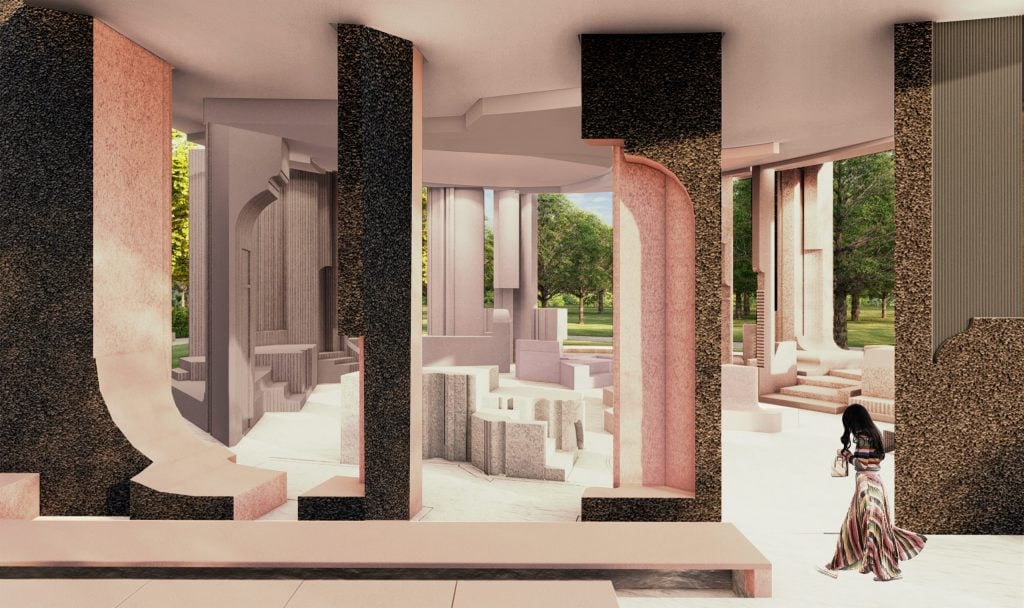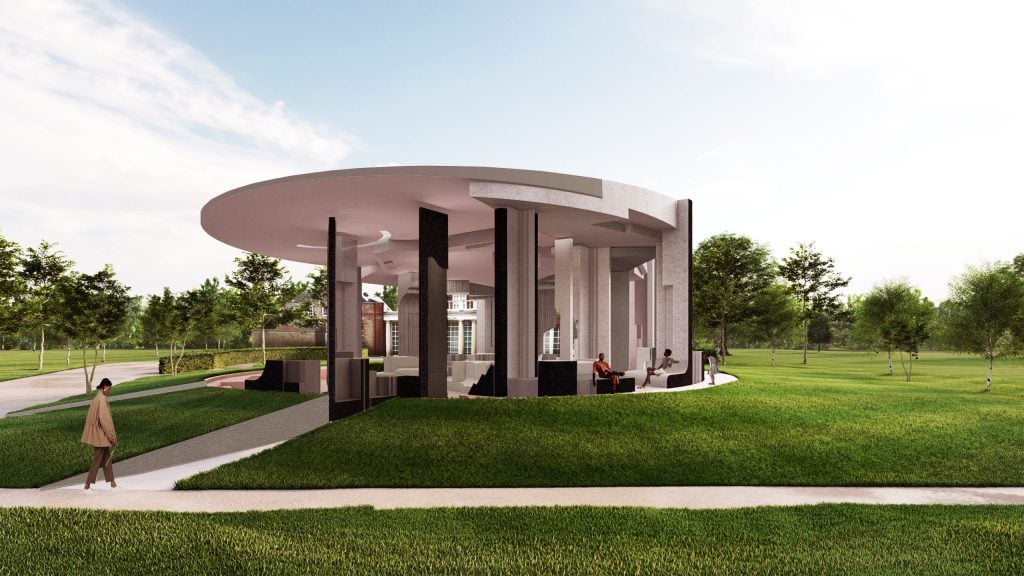People
‘I Want to Build Differently’: Meet Sumayya Vally, the Youngest Architect Ever to Win the Prestigious Serpentine Pavilion Commission
Vally and her firm Counterspace believe in the social impact of urban design.

Vally and her firm Counterspace believe in the social impact of urban design.

A thunderstorm raged in the background as I spoke to the architect Sumayya Vally over the phone from her hometown of Johannesburg, South Africa.
Luckily, the 30-year-old architect knows how to weather a storm. She has dedicated her career to pushing against conventional architectural practices in an effort to carve out a new design language for the African continent that celebrates its varied textures and cultures.
Vally is the brains behind this year’s prestigious commission to design the pavilion for London’s Serpentine Galleries. It’s an honor that has been accorded to famous architects from Frank Gehry to Zaha Hadid; she’s the youngest to take up the mantle.
Vally’s firm—whose name, Counterspace, expresses her interest in elevating the quotidian—has designed a pavilion focused on the theme of community gathering. The pavilion will include detachable components that will be placed in marginalized neighborhoods across London. Following community events at these locations, the parts will be returned to the central structure.
The project’s aesthetic is inspired by gathering spaces common to those neighborhoods, from open-air markets to religious centers. “It is really important for me that architecture not just includes people who are generally excluded from the discipline or from the profession,” Vally says, “but also draws on the workings of other places and the intelligences in those spaces.”

Serpentine Pavilion 2020/2021 designed by Counterspace, Design Render, Interior View, © Counterspace.
In this extraordinary year, the opening of the pavilion has been postponed to summer 2021. The delay has been a challenge for Vally, but she also sees value in having the extra research time and space to engage more deeply with the communities involved in the project. She hopes that the environment brought about by this year’s reckoning over racial justice will make audiences more receptive to her ideas.
When we touch on the critical attention she has received as a result of being tapped for the prestigious commission, Vally begins tearing up. She is finally being taken seriously, which she sees as a glimmer of hope and affirmation on a journey that has not always been easy. “There are natural obstacles that come with being a woman and of color and being in the profession that I’m in,” she says.
The architect is Indian South African; she grew up in an Apartheid township in Pretoria that was previously an Indian-only area. Her grandfather was a migrant and a store owner in inner city Johannesburg, and she describes the long walks she took from his store to the Johannesburg Public Library as formative parts of her childhood. She recalls feeling struck by the juxtaposition between the imposing Italianate structure of the library and the rich textures of the city’s streets.

A slice of London that inspired the design forms of the pavilion. Image courtesy Sumayya Vally.
Vally’s home city has played a central role in shaping her understanding of land, place, and the power of architecture to connect people. But she gained this hard-won knowledge by seeing architecture’s potential as a weapon. She internalized the toxic infrastructure of Apartheid city planning, which used everything from radioactive mine waste dumps to sewage plants and industrial zones to segregate the races.
“I think that all cities to a degree are like this, but Joburg is a really extreme example,” Vally says.
Before the Serpentine commission, most of Vally’s work has been closer to home, including a project for the Brixton mosque in Johannesburg in which Counterspace transformed the structure of an old Dutch church with a minaret of light that appears five times a day.
The architect will touch on the social impact of architecture and urban planning in a part-performance, part-lecture in the Serpentine’s art and ecology festival later this week. She will also take part in a conversation about zero-carbon architecture with architect Yasmeen Lari. Vally’s design for the Serpentine’s pavilion includes bricks made from recycled rubbish; inventiveness and reuse are second nature, she says, given her roots in an area where resources are scarce.
Vally formed Counterspace with a group of students back when she was still a student at the University of the Witwatersrand and the University of Pretoria. She had grown weary with the curriculum.
“We were learning stuff that was about a first world or a developed world, and I just really felt the hunger to be working through things that were more in sync and in tune with what was happening around me in the city,” Vally says.
Counterspace began as a side project alongside her full-time job as a researcher at established firms in the city, as well as various teaching responsibilities. “Even in the most boring or the conventional work, I did try to push my own agenda and expand the brief as much as I could and weave in a lot of research themes that we were working on,” Vally says, adding that being able to easily code switch and inhabit multiple worlds at once became a particular strength.
“I think for the most part conventional practices didn’t really understand what I was doing or working on,” she observes. “We were perceived as outliers and a lot of the time people didn’t understand how it was architecture or related to the architectural profession.”

Serpentine Pavilion 2020/2021 designed by Counterspace, Design Render, Exterior View © Counterspace.
Today, Vally is more confident in her own position as an outlier, and she is optimistic about how architecture can be a force for change, particularly within her own context in Joburg, and more broadly across the Global South. “There is so much richness that is waiting to be translated into new design forms,” she says.
Today, she is inspired by architecture that is not static, or interested in memorializing—thinking about design as an expression of embodiment is what lights her up. Architecture, as she sees it, can be akin to performance and ritual; more expression than edifice.
“Other architects often ask me if I have aspirations to build,” she says. “I absolutely have aspirations to build—I just want to build differently.”
Sumayya Vally will be in conversation with architect Yasmeen Lari on December 6 as part of the Serpentine’s free online arts and ecology festival. Her film Ingesting Architectures will also be screened as part of the event.